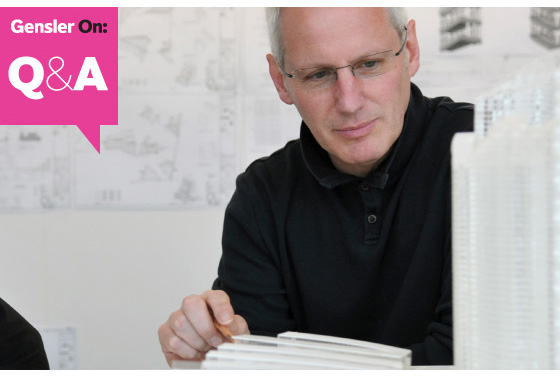
On September 23rd, Jon Tollit – a principal in Gensler’s London office and co-leader of the firm’s retail practice – participated in a panel discussion of Augmented Reality and the Future of Online Retail at Tramshed Live, an exhibition at this year’s London Design Festival. Given that mobile and virtual technology is today’s hottest topic in the retail industry, we couldn’t pass up this opportunity to ask Jon what was discussed in London.
Q: What were the biggest questions on the minds of the event attendees?
What I found interesting were two very different schools of thought: One was very anti-technology, and considered it unnecessary to duplicate existing shopping experiences online, as if they were wholly unaware of the future potential of technology. The other side was a huge expectation of technology being able to do amazing things immediately, i.e. have body scanned & wear perfectly fitting clothes of their choice virtually before purchase. We are aware of what is possible or is ‘out there’ in other industries or what we see on TV and expect it in our control immediately. We have come a huge distance in 20 years but things take time to evolve both in product and software following the dialogue between customer and retailer, cost and ROI.
Q: What is the most significant change in the retail industry you've seen, as a result of new technologies?
It is now the potential of video-capable handheld multi-functional devices. This puts control and choice in the hands of the consumer in a mobile fashion all-from-one format. Many more suppliers will see the opportunity to develop interfaces and ‘retailers’ will see the potential benefits to customers, or customers demand of retailers.
Q: Though customers are increasingly using their computers and mobile phones to make purchases, some say that retailers need to maintain a strong focus on the in-store, in-person experience. Is the brick-and-mortar shop at risk of becoming obsolete?
I don’t think it is a case of either/or. The physical experience cannot be beaten or replaced but it can develop in terms of where it occurs and what it delivers. It is experiential and sensuous. The same amount of creativity needs to be applied to the new opportunities together with retailers fully understanding the service element of personal interaction. The mobile device frees people from their desktop. The use of mobile technology within a physical environment has only just started to be investigated. We must not ignore one for the other. As architects and designers we have a role to play in both and to be a key part of the multi channel joined up thinking.
Q: Can you provide an example of a retailer who’s approaching multi-channel retail well – successfully balancing the in-store and online worlds?
Someone like Mini is great. The in store experience is very brand oriented, effective to their customers and is more than a car show room, more akin to a motor show. The online continues the brand experience, references advertising campaigns and also gives customers an exciting interface and also choice and personalization.
Q: If retailers were to prioritize one strategy over all others, what do you consider the number one thing retailers should be doing in order to adapt to today’s multi-channel shopping environment; i.e., is there a “no-brainer” that retailers could do quickly, easily, and cost-effectively right away?
Tough one, but the imperative is that a retailer be responsive and understand their customers as their primary strategy across all channels.
Q: Any other comments?
As designers of different skills we can help our clients from many different industries understand the potential of the current opportunities and immediate requirements but also to assist in longer term planning, development of ideas to see potential, work with other specialists, and provide a flexibility and responsiveness that is appropriate to their business and their customers. We don’t just design stores once a lease has been signed. The creative consultants can provide a very broad approach to a business and be part of an evolution rather than purely project based.